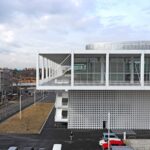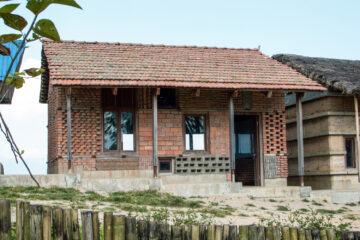Nagoya Zokei University: A Bridge of Artistic Innovation by Riken Yamamoto

In 2022, Nagoya Zokei University of Art and Design embarked on a significant transition, relocating from its current campus in Komaki to Nagoya city. Situated adjacent to Meijo Park, with Nagoya Castle Meijo Koen Station directly below, the new campus marks a pivotal chapter in the university’s journey.

A Bridge Between Spaces
Designed by Riken Yamamoto, the campus embodies a unique architectural concept. Spanning the station, it seamlessly integrates the east and west sections of the grounds, serving as a literal bridge. The expansive top floor, measuring 88m by 88m, symbolizes this bridging of spaces, offering a vast open area for artistic expression.
Reimagining Art Education
The relocation provided an opportunity to revitalize the university’s educational framework. Nine distinct courses of study were streamlined into five cohesive fields, transcending traditional divisions based on skill or medium. Instead, courses were reorganized based on the fundamental purpose of artistic and design endeavors, fostering a more holistic approach to education.
Organizational Restructuring
Under the new framework, courses such as Japanese-style painting, Western-style painting, sculpture, interior design, manga, illustration, and CG are no longer segregated by discipline. Instead, they are grouped into five fields: Art Expression, Visual Literature, Community Area Design, Community Sense Design, and Representation Design. This restructuring encourages interdisciplinary collaboration and exploration.

A Hub of Creativity
At the heart of the campus lies the expansive studio, serving as a vibrant hub for artistic exchange and collaboration. This shared workspace fosters interaction among students from diverse fields of study, providing a fertile ground for cross-pollination of ideas and creative exploration.
Fostering Collaboration
By bringing together students from various disciplines in a communal setting, the university promotes a culture of collaboration and innovation. The shared office-like environment encourages interdisciplinary dialogue and nurtures a sense of community among aspiring artists and designers.
Conclusion
Nagoya Zokei University’s new campus represents more than just a physical relocation—it embodies a vision of integrated art education and collaborative creativity. With its innovative design and reimagined educational framework, the university is poised to cultivate the next generation of visionary artists and designers.


















